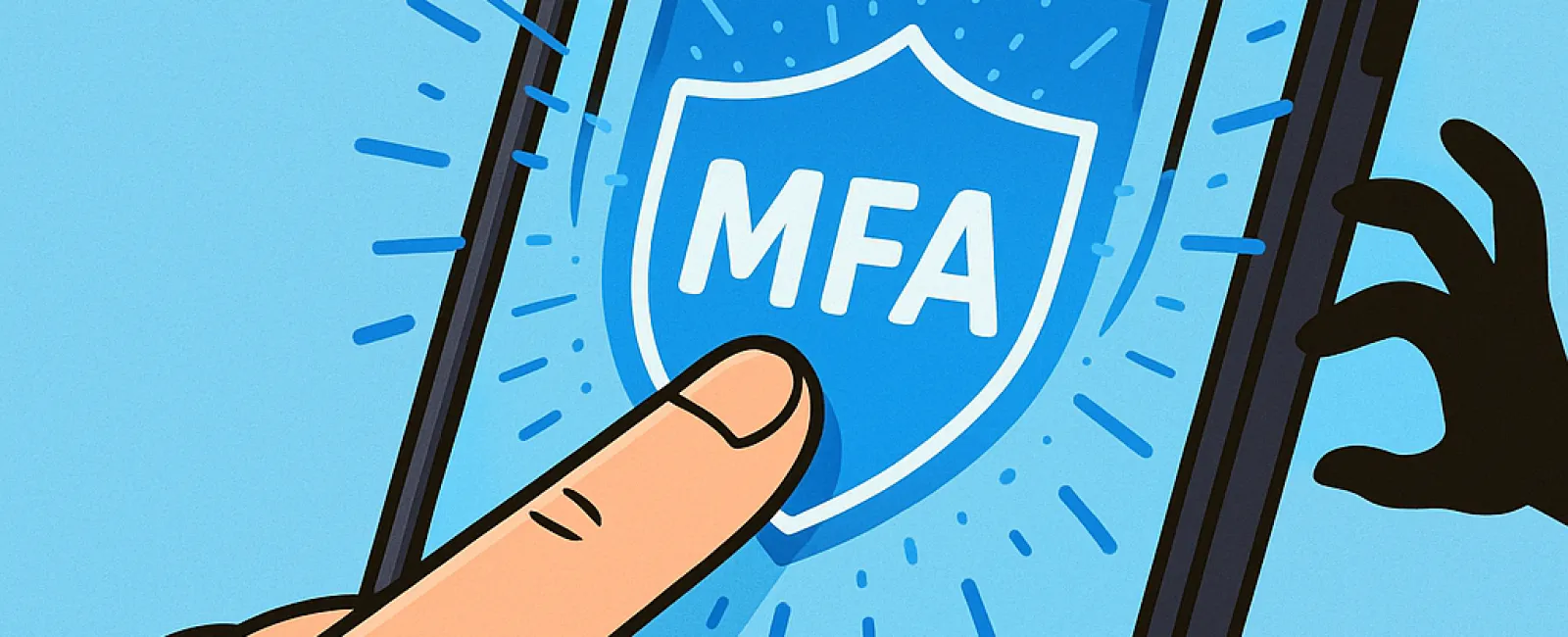October 27, 2025
Just as you wouldn't drive without fastening your seatbelt or leave your office unlocked overnight, you shouldn't go online without enabling multifactor authentication (MFA). It's a critical safeguard for your digital security.
MFA acts like an additional lock on your online accounts. Rather than depending solely on a password—which can be easily stolen, guessed, or phished—it introduces an extra verification step, such as a text message code, an authentication app prompt, or a fingerprint scan. Even if hackers obtain your password, they're blocked without this second layer of defense.
A Simple Step That Transforms Your Security
Think of your password as locking the front door at night. Enabling MFA is like turning on a sophisticated security system before you rest. Although not absolutely mandatory, it provides vital peace of mind—protecting you if one layer fails.
MFA adds a swift, extra step to verify your identity at login. Known by various names—"two-step verification," "two-factor authentication," or "one-time password"—these processes all enforce dual or multiple verification stages before granting access to sensitive data.
MFA can take multiple forms: confirmation emails during account creation, bank security questions, text message codes, push notifications, or phone call verifications. Most are quick and often just require a tap.
How MFA Protects You in Real-Life Scenarios
MFA is effortless on your end—simply approve a prompt or enter a code. But for cybercriminals, it's a significant obstacle. If an unauthorized party tries to access your account, MFA immediately sends you a notification or request for a code, alerting you to a breach. This early warning gives you the chance to secure your account before any damage occurs.
Furthermore, MFA stops hackers who might have tricked your employees into handing over passwords. Without the second authentication step, they simply cannot gain entry. In fact, Microsoft's research shows enabling MFA reduces account compromise risk by over 99.2%, and up to 99.99% for fully protected accounts.
Where to Enable MFA and How to Get Started
Prioritize enabling MFA on the following essential platforms:
- Banking and financial management apps
- Email services and cloud storage accounts
- Social media platforms
- Work-related systems containing client or proprietary data
Most major services have built-in MFA options—simply activate the method that fits your needs and include it in your routine. Utilizing authentication apps can further bolster employee login security.
In essence, setting up MFA is a swift, cost-free step that prevents most account breaches. Taking just a moment today to protect your accounts can save you from costly, prolonged data recovery and security headaches later.
The simplest way to implement MFA is by reaching out to your IT specialist. A reliable Managed Service Provider (MSP) will streamline the setup process. If you require expert cybersecurity assistance,



